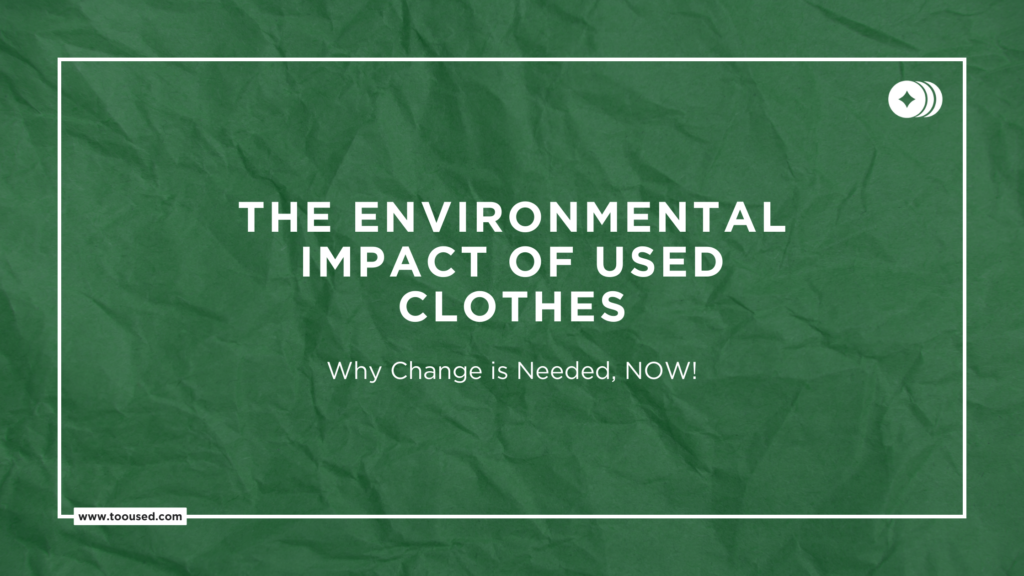The Environmental Impact of Used Clothes: Why Change is Needed

Introduction:
Fast fashion and rapidly changing trends have led to an overconsumption of clothing around the world. As consumers buy more cheap garments and quickly dispose of them, the environmental impact of used clothes has become staggering. What many don’t realize is that improper disposal of used clothing has consequences beyond overflowing landfills. Keep reading to learn more about the lifecycle impacts of used clothes and why conscious consumer habits are urgently needed.
The Growing Problem of Textile Waste
According to the EPA, over 16 million tons of textile waste is generated annually in the US alone. But only 15% of discarded clothing is donated or recycled. The rest ends up in landfills and incinerators, leaching pollutants into ecosystems and the atmosphere. Fiber shedding during washing also contributes to microplastic pollution in waterways. Globally, the UN estimates that textile waste accounts for 5-10% of all waste in landfills worldwide. With fast fashion trends promoting overconsumption, the numbers continue rising.
The Heavy Carbon and Water Footprint
Even donated used clothes carry an environmental burden. As charities sell donated items overseas to countries like Kenya, the international shipping and transportation leads to high carbon emissions. Additionally, the apparel industry’s water consumption is astronomical. It can take up to 200 tons of water to produce one ton of fabric. Discarded clothing made from resource-intensive cotton, wool, or synthetics represent embedded water that is wasted.
The Threat of Microfiber Pollution
Many clothes are made from synthetic materials like polyester that shed thousands of plastic microfibers when washed. These find their way into water systems and oceans. Research by the University of California Santa Barbara found that microfibers accounted for 85% of human-made debris on shorelines. As clothes made from synthetics pile up in landfills, they further leach chemicals over decades.
The Urgent Need for Sustainable Solutions
Clearly the linear model of clothing production and disposal creates massive waste. While donating used clothes is better than throwing them out, reducing overconsumption and closed-loop systems are needed. Brands like Patagonia are paving the way with clothing trade-in programs. Consumers also have power through mindful purchases, mending and caring for garments, and innovative resale platforms. Technology like the TooUsed app provides opportunities to give used fashion new life sustainably.
The toll of fast fashion and rising textile waste is apparent. But progress lies in shifting to circular systems that maximize the lifecycle of clothing while eliminating pollution and carbon emissions. Conscious consumers and brands can work together to prolong the use of garments – and benefit the planet in the process.
Conclusion:
The environmental impacts of used clothes make it clear that new solutions are needed to promote sustainability in the fashion industry. By reducing waste, keeping textiles cycling in the economy, and purchasing responsibly, collectively we can mitigate the pollution caused by discarded clothing. Small actions like donating, swapping, and repairing make a tangible difference. With innovation and mindfulness, a circular future of fashion lies ahead.